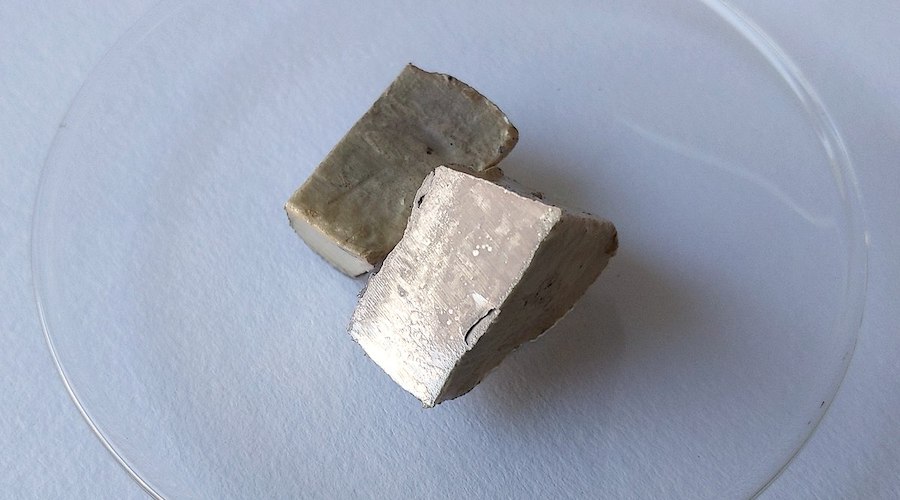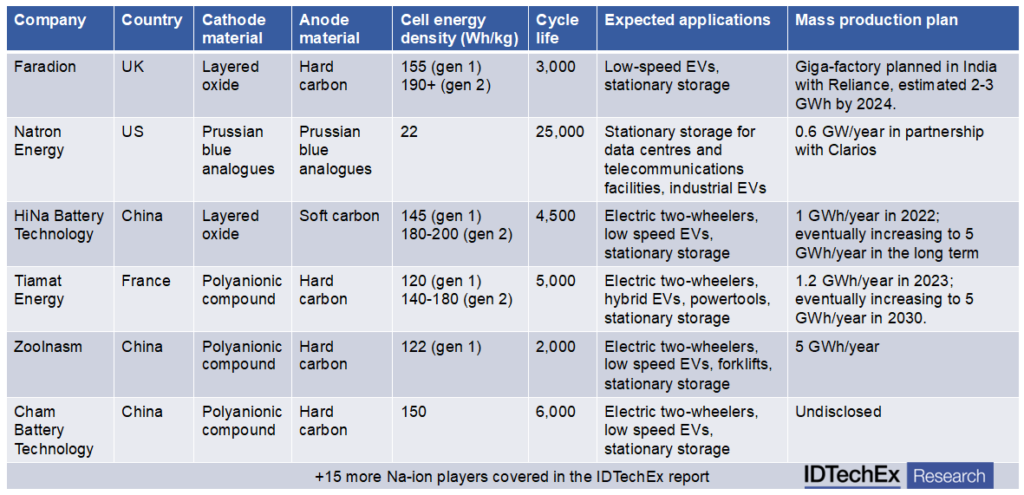
A recent report by IDTechEx predicts that by 2025, around 10 GWh of sodium-ion batteries will be installed as significant manufacturing capacities come online and existing lithium-ion lines are converted to Na-ion production.
“Success (or failure) for one player can significantly impact the market. A CAGR of 27% is expected for the period 2025-2033,” the dossier reads. “Growth follows a similar market growth rate as that of Li-ion batteries. Over the next 10 years, the addressable markets will likely be far higher than the expansion of Na-ion supply chains and manufacturing capacities or even demand. But there may be potential for more rapid growth than forecast once the technology is trusted, qualified, bankable, available, etc.”
According to the market analyst, it is important to consider that Na-ion is a drop-in technology to Li-ion’s current production lines, as gigafactories can be retrofitted to produce Na-ion cells relatively quickly.
“The production capacities of the material manufacturers also indicate that significantly more companies will build their own sodium batteries in 2024 and that there could be much larger capacities in 2025,” the document states.
IDTechEx’s experts also note that there is currently no cost-effective battery technology with an energy density between lead and lithium batteries.
The analyst’s data show that the average cell cost for Na-ion batteries is $87/kWh taking different chemistries into account.
“By the end of the decade, the production cost of Na-ion battery cells using primarily iron and manganese will probably bottom out at around $40/kWh, which would be around $50/kWh at the pack level,” the report points out. “Na-ion cells are likely to come at a price premium initially, but IDTechEx expects a drop in cost/price in the short term through manufacturing efficiencies, scale, and technology development. However, long-term cost reductions become harder as technology and manufacturing become more established and mature.“

The paper explains that for most EVs, volumetric energy density is the first or second priority because the more space a battery cell takes up for a given energy density, the fewer cells you can squeeze under a vehicle, limiting range. For grid storage, the space that the battery packs take up doesn’t affect their commercial viability, and the priority is the cost per kWh per cycle.
“Commercial energy storage is all about cost control, and this is where sodium ions can potentially dominate other chemistries. The greatest potential in transport applications for Na-ion batteries exists wherever the energy density of lithium batteries is not fully utilized,” the document reads. “This includes almost all-electric cars with a so-called standard range, i.e., reduced battery capacity compared to more expensive models of the same construction. There, sodium batteries with higher charging speeds and less capacity loss in cold temperatures could represent a very attractive alternative. Above all, thanks to this alternative energy storage technology, lithium batteries will be available where they are truly indispensable.”
In the view of IDTechEx, the sodium-ion chemistry will be well-suited to complement, rather than displace, the existing and future lithium-ion technologies in many applications, particularly in contexts where local access to lithium-ion raw materials is limited and energy security and geopolitical concerns are rising.
“Diversification of battery chemistries is critical for long-term capacity growth. It should be self-evident that no single battery chemistry possesses all the attributes for every single application – each market has its nuances and requires unique solutions,” the dossier states.